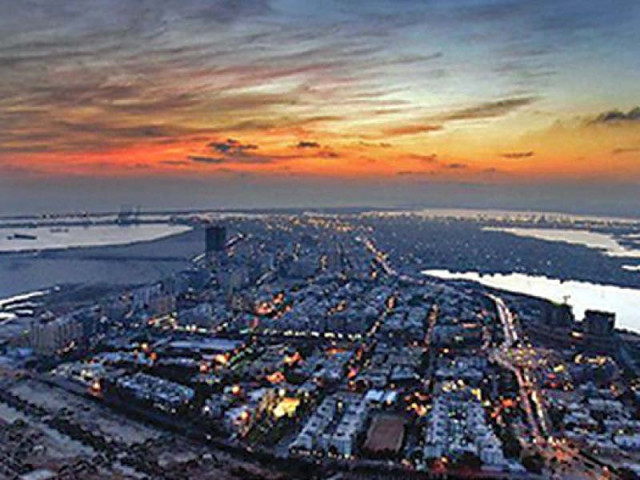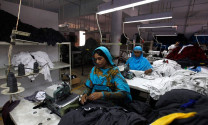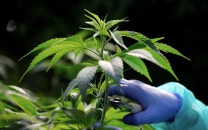Pakistan to maintain growth trend
SBP report expects agriculture, industries and services sectors to perform well

Pakistan’s central bank is expecting that the economy will maintain its growth momentum through bumpy roads in the current fiscal year 2022 as a likely higher inflation reading, high import payments and elevating exports would remain among key challenges during the year.
All the three major sub-sectors of the economy; agriculture, industries and services, are expected to support growth momentum during the year in the wake of the government’s pro-growth policies, according to the central bank on Friday.
Besides, increase in imports and surge in import price of raw material (cotton and yarn) meant for leading textile export industry and reopening of export competitors economies likes India and Bangladesh may keep challenge of narrowing down trade deficit alive and the balance of current account is set to be returned into deficit in FY22.
“Going forward, in FY22, the economic momentum that become evident during FY21 is expected to strengthen further,” Pakistan’s central bank said in its third quarterly (Jan-Mar FY21) report on the state of Pakistan’s economy.
Read: ‘Growth needs mature knowledge of economy’
To recall, the domestic economy grew 4% in FY21 compared to a contraction of 0.5% in FY20. The government has set growth target of 4.8% for the current fiscal year 2022.
On the agriculture side, the impetus is likely to come from further improvement in output, with the government emphasising use of better seed varieties and modern technology. “In particular, cotton production is expected to recover from the multi-year low recorded in FY21,” State Bank of Pakistan (SBP) said.
“The government’s Kharif and Rabi packages, which typically includes subsidies on fertilisers and other inputs, are also anticipated to support growth in the agriculture sector.”
Further impetus to economic growth is likely to come from planned investment in industrial sector through the central bank’s subsidised Temporary Economic Refinance Facility (TERF), which ended in March 2021, and boost in the government backed construction activities.
Further, the government has indicated its intention to increase PSDP (development) spending, which would also be a major contributing factor to the higher growth outcome, it said.
“These favourable trends across agriculture and industry would also spill over to the services sector,” it said.
The strong inflow of workers’ remittances would continue to support growth. “In addition to this, the International Monetary Fund (IMF) programme would help the continuation of foreign exchange inflows from external sources, while promoting further stability in the balance of payments.”
The fiscal deficit is expected to narrow amid continuous increase in revenue collection in FY22, as well as the acceptance of the proposal to remove corporate tax exemptions. “The higher growth outcome in FY22 would further boost revenue collection.”
Challenges in the economy
There are multiple upside risks to inflation expectations. First, the ongoing rising trend in international commodity prices is broad-based, with prices of oil, food and metals, all rising significantly.
Second, upward adjustment in utility tariffs (electricity, gas and fuel) could further feed into inflation as well as inflationary expectations. Third, wage pressures will need to be watched carefully, particularly in the context of any increase in the minimum wage and public sector pay.
Fourth, the withdrawal of sales tax exemptions and other potential revenue-generation measures in the FY22 budget may also lead to an increase in inflation during the fiscal year.
The current account deficit is expected to rise, mainly due to a further widening in trade deficit on account of likely rise in import payments. The increase in imports reflects higher oil prices, which are now projected to add to the pressures coming from consistently growing import volumes of energy commodities.
Read more: Economic growth figment of govt’s imagination: opposition
Second, the ongoing rising trend in global non-energy prices, including food and metals, would also contribute to the increase in import payments. And third, capital goods imports are projected to increase, in the wake of significant borrowing under TERF.
“While the borrowing amount (Rs436 billion) under the scheme has been approved, the actual imports are expected to materialise over the next few months,” according to the report.
On the other hand, growth in export receipts is mainly projected to come from the continued strong momentum in high value textile items (that is apparel and home textiles), as well as a rebound in rice exports amid better crop expectations (which would allow exporters to offer more competitive price).
“However, potential downside risks to the export growth include continually rising international prices of textiles inputs (including cotton yarn), which might impact exporters’ competitiveness.
Published in The Express Tribune, July 17th, 2021.
Like Business on Facebook, follow @TribuneBiz on Twitter to stay informed and join in the conversation.



















COMMENTS
Comments are moderated and generally will be posted if they are on-topic and not abusive.
For more information, please see our Comments FAQ